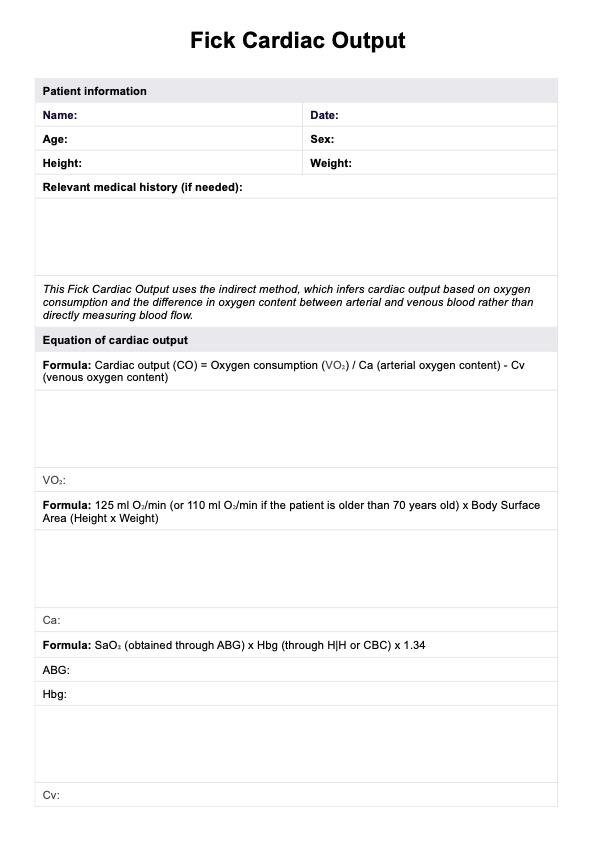Cardiologists, cardiac surgeons, anesthesiologists, and intensive care specialists commonly request Fick Cardiac Output measurements. They are essential for assessing cardiac performance in patients with various heart and critical care conditions.

Fick Cardiac Output
Enhance cardiac assessments with the Fick Cardiac Output measurement. Download a comprehensive PDF template for structured evaluations. Optimize patient care.
Fick Cardiac Output Template
Commonly asked questions
Fick Cardiac Outputs are used in clinical scenarios like diagnosing heart diseases, monitoring patients during surgeries, assessing critically ill patients in ICUs, and evaluating athletes' cardiovascular health in sports medicine. These measurements provide crucial insights into cardiac function.
To measure Fick's Cardiac Output, arterial and venous blood samples are obtained. The oxygen content of these samples is calculated, and the cardiac output is determined using the Fick equation. This calculation assesses how efficiently the heart delivers oxygen to the body.
EHR and practice management software
Get started for free
*No credit card required
Free
$0/usd
Unlimited clients
Telehealth
1GB of storage
Client portal text
Automated billing and online payments











